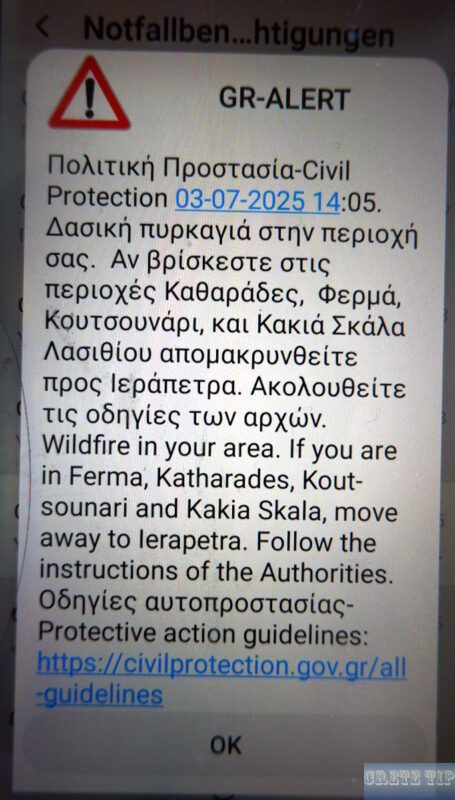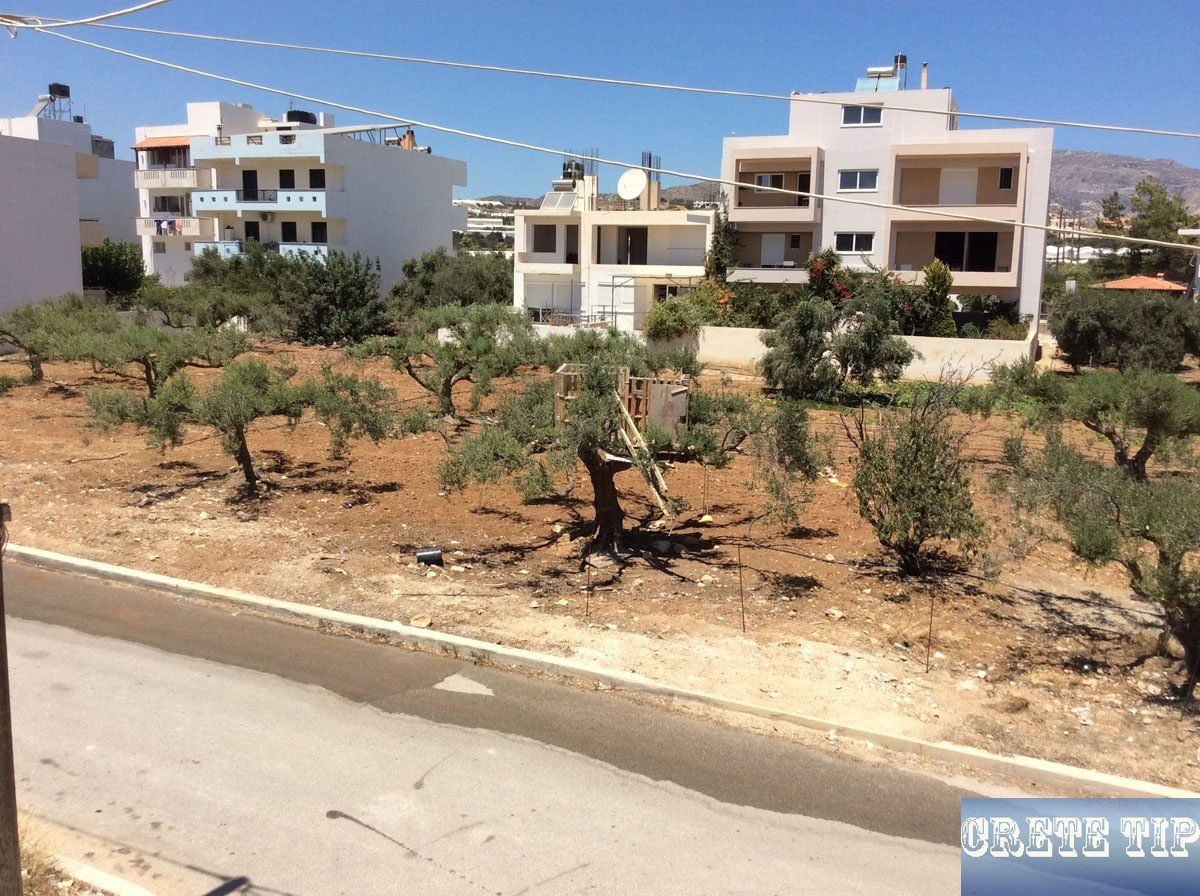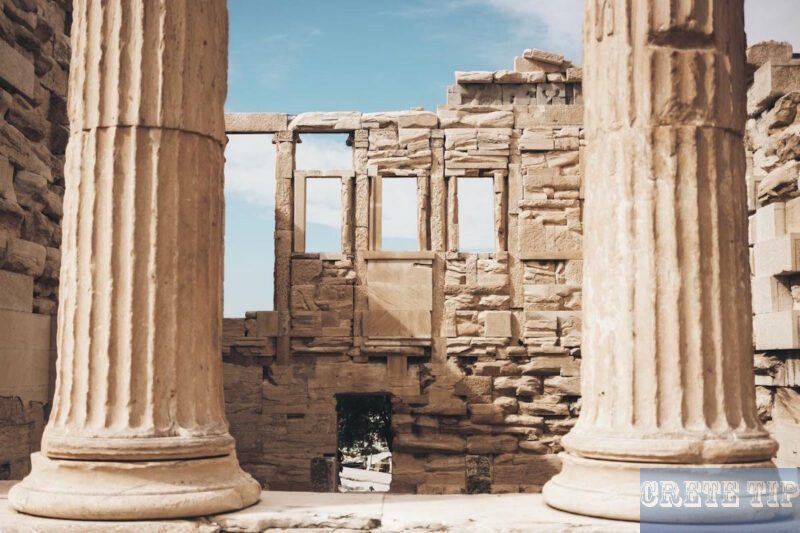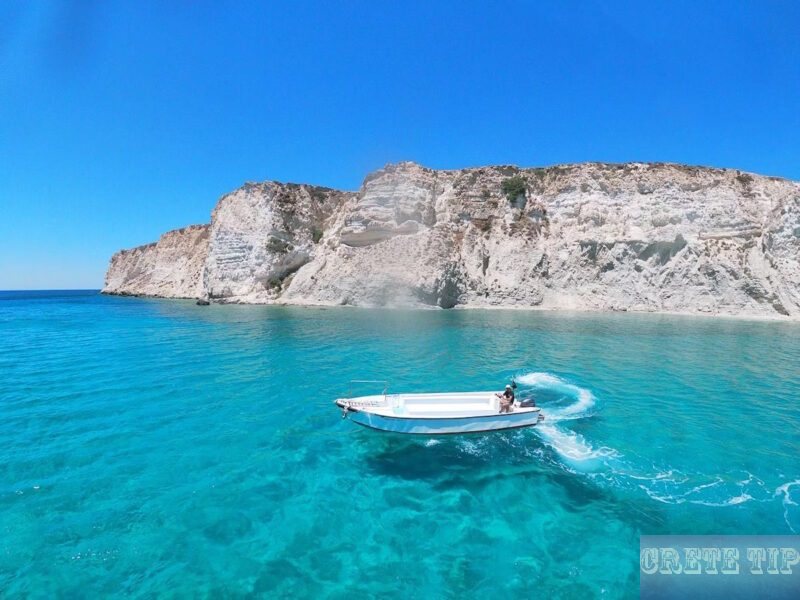Update on the fire battle near Ierapetra on 3 July, 19 a.m.
Update on the most devastating fire in Crete
Ierapetra’s in a tough spot right now, with fires flaring up again in Ferma and Achlia. Emergency crews have jumped into action, enforcing strict measures to keep people safe and try to get a handle on the flames.
Firefighters, plus a good number of planes and helicopters, are out there fighting the fires as they spread. Several villages have been evacuated just in case, while crews keep working to contain things.
Over 300 firefighters and 10 aerial units are on the job, trying to put out the fires. The situation’s especially intense around Ferma and Ahlia, and emergency alerts have gone out to four settlements nearby.
Strong winds—up to 11 Beaufort—keep sparking new flare-ups, making it hard to control the situation. More firefighters keep arriving from different regions to help out.
Crews are focusing on hard-to-reach, mountainous spots. Farmers have even brought their own water tank trucks to help, and specialized teams are out fixing power lines that the fire damaged.
The region is officially under a civil protection emergency now. That means local leaders can bring in extra resources fast and coordinate rescue work better.
Evacuations are happening in villages where the fire gets close to homes. The top priority is keeping people safe and protecting vital infrastructure.
Key Points |
Details |
|---|---|
Firefighters involved |
300+ |
Aerial units |
10 |
Wind Force |
Up to 11 Beaufort |
Affected areas |
Ferma, Ahlia, and surrounding villages |
Emergency alerts |
Four local settlements |
Evacuations |
Multiple villages |
Support Vehicles |
Agricultural water tank trucks |
Power Network Repairs |
Active restoration by specialised teams |
Declared Emergency State |
Civil Protection Emergency |
Boats and helicopters are flying in close, dropping water and fire retardant—sometimes uncomfortably near homes. The weather keeps changing, and the landscape doesn’t make things any easier.
People are getting regular updates and warnings to help them stay ready for sudden changes. Emergency hotlines and alert systems are still up and running for anyone who needs info fast.
Emergency Alert Activation

Everyone in those areas was told to evacuate immediately toward Ierapetra. The message made it clear: follow every instruction from fire crews and police, no exceptions.
Strong winds are pushing the fire faster and making it more intense. That’s a big risk for anyone nearby, and the threat to homes and businesses is real.
Emergency services have stressed how important it is to leave quickly and wait at safe spots until they say it’s okay to return.
Helicopters and planes have been flying since early morning, dropping water to help the teams on the ground. They’re fighting several fire fronts and dealing with new flare-ups all the time.
The deputy mayor said the fire got out of hand quickly, even though everyone worked hard to stop it. Winds overnight made things worse, and the fire just wouldn’t let up.
Early damage reports show homes, gardens, greenhouses, and businesses have all been hit. The power grid took a big hit too.
Once the fire’s out, teams will do a full damage check and start planning how to help people recover and rebuild.
Key Points of the Alert
Detail |
|
|---|---|
Areas involved |
Katharades, Ferma, Koutsounari, Kakia Skala |
Evacuation direction |
Towards Ierapetra |
Reason for alert |
Rapid spread and high intensity of fire |
Emergency response |
Firefighters, police, air and ground forces |
Damage reported |
Homes, businesses, electric network |
Public instructions |
Immediate evacuation, follow official directives |
Actions Taken by Authorities
- Firefighting both on the ground and from the air, nonstop.
- Multiple 112 emergency messages sent to people in danger zones.
- Over 300 firefighters and 10 aerial firefighting vehicles dispatched.
- Civil protection agencies and local government working closely together.
Public Safety Recommendations
- Leave threatened areas right away.
- Don’t go back to evacuated zones, even for a quick check.
- Listen to emergency crews and do what they say.
- Keep an eye on official channels for updates.
The wildfire’s risk is off the charts, and officials are staying on high alert to protect everyone and their property.
Unprecedented Evacuation of the Area
For the first time in a while, officials ordered everyone out of all villages and hotels in the Saint John area. This happened as a big fire moved dangerously close to the main road between Ierapetra and Siteia.
The Harmony hotel, right near the fire’s starting point, was the first to evacuate. Guests got out safely, and the hotel didn’t end up damaged.
That night, winds suddenly changed, and the fire raced toward Ferma. Police told the Porto Belissario hotel to evacuate right away.
About 100 guests at Porto Belissario left in taxis and private cars, heading to hotels in Ierapetra. Those hotels made room for everyone, even using lobbies and common spaces so nobody was left out in the cold.
The hotel owners really stepped up, working together to make sure things went as smoothly as possible.
The Municipality of Ierapetra coordinated with the Regional Authority, Fire Service, and Coast Guard. The hotel evacuations happened quickly and with pretty impressive organization.
As more people left, two sports halls—the Markos Foniadakis Gymnasium and the school gym—opened up for anyone who couldn’t find a hotel room. Volunteers from the Red Cross, local groups, and regular folks pitched in with supplies and help.
Around 500 people spent the night in the sports halls, and about 5,000 were evacuated from the danger zone altogether. Most residents stayed with friends or family nearby.
By morning, travel agencies started moving tourists to hotels far from the fire, making sure everyone stayed safe and had a place to sleep.
Numerous Scattered Firepoints
Even though crews have managed to slow the main fire, plenty of smaller fires keep popping up all over the place. Gusty winds make things worse, spreading sparks and reigniting flames where you least expect it.
Since early morning, ten helicopters have joined hundreds of firefighters and volunteers. They’re busy making new firebreaks and dropping water and foam to hold back the fires.
Local officials keep urging people who haven’t left yet to listen to fire and police instructions. The fire’s still not under control, and the next few hours could be critical—everyone’s hoping the winds will finally ease up.
Fire crews have worked all night, combining water drops with aerial support. The helicopters have made a real difference, slowly helping conditions improve.
Sometimes, the winds pick up again, turning small flare-ups into bigger fires. These scattered hotspots make it tough to get ahead of things.
Officials are getting ready to inspect the area and assess damage. They’re meeting with different agencies to figure out what to do next.
The fire has now reached the forested area of Ai Giannis, where those relentless winds just won’t let up. Ten helicopters are still flying at once, dropping water where it’s needed most.
One helicopter had to get dangerously close to high-voltage power lines—150,000 kW—just to make a precise drop. That kind of risk shows what these teams are up against.
Five homes, mostly summer houses in Ferma, have been lost. There’s also a lot of damage to greenhouses and crops.
Because of the winds, helicopters are now pulling water from the Bramiana dam instead of the sea. It’s a small change, but it matters with this kind of pressure.
With scattered hotspots, tricky winds, and tough terrain, firefighting stays a complicated, high-stakes job. Ground and air teams need to keep working together if they’re going to stop the fire from spreading further.
Heartbreaking Scenes from a Burnt-Out Farmyard
The recent wildfire tore through the courtyards of many homes and broke into farmyards, leaving behind a trail of severe damage. Vehicles burned, and countless animals that people kept for farming or shelter lost their lives in the flames.
Photos snapped in the aftermath show abandoned cars, ruined tools, and just the skeletal remains of animals. It’s a brutal, visual reminder of what the fire did to these communities.
The flames raced across both agricultural and forest land in several areas. Strong winds—sometimes up to 9 Beaufort—fed the fire, sending whirlwinds that pushed the blaze right up to homes and greenhouses.
Some of the worst-hit places include Galini, Ferma, and the areas stretching toward Koutsounari. Firefighters zeroed in on these zones, trying to contain the destruction.
More than 300 firefighters jumped in, working around the clock. Specialised forest units and volunteer patrols joined in, and both municipal and private water tankers backed them up.
They brought in heavy machinery to clear brush and carve out firebreaks. It was all hands on deck, really.
Helicopters hovered above, dropping water and foam again and again through the night. That air support gave ground crews a fighting chance.
Aspect |
Details |
|---|---|
Number of firefighters |
Over 300 |
Air assets |
3 helicopters |
Wind speed |
Up to 9 Beaufort |
Main fire areas |
Galini, Ferma, towards Koutsounari |
Support equipment |
Water tankers, heavy machinery |
Terrain affected |
Agricultural and forest land, farms |
Visual records capture the harsh reality of what the wildfire left behind—ashes where life once thrived.
Large-Scale Firefighting Operation
Firefighters are still battling the flames, and those relentless winds aren’t making it any easier. Over 230 firefighters are on the ground, with 46 vehicles and 10 aircraft joining the fight.
Thirteen specialised EMODE teams are there, too, focusing on the trickiest spots. Reinforcements showed up from Athens after midnight, flying in on a C-130 transport plane.
Earlier in the morning, five fire trucks and their crews arrived by ferry. Together, they’re trying to get a handle on the different fire fronts.
Resource Type |
Quantity |
|---|---|
Firefighters |
230+ |
Fire engines |
46 |
EMODE teams |
13 |
Aircraft (planes, helicopters) |
10 |
Ground and air teams keep adjusting to the wind, trying to stop flare-ups and keep the fire from reaching more homes. It’s a tough job, no doubt.
Firefighters face tough conditions but stay focused on protecting what they can—lives, homes, and whatever else is in the fire’s path.
Fire Service Update: Multiple Scattered Flames in Ierapetra
About 1,500 residents evacuated from several areas—just in case. Most left by bus for towns like Malia and Hersonissos.
Fire crews are tackling flames scattered all over the Ierapetra area. Strong gusts—up to 9 Beaufort—keep pushing the fire in new, unpredictable directions.
These winds spark fresh fires and force firefighters to stay sharp. It’s a constant battle to keep up.
- Large teams are out there, working together to control each outbreak.
- Wind keeps shifting embers, creating new problems.
- Rough terrain and weather slow everything down.
Even places that seemed safe can suddenly light up again. Crews have to jump between main fronts and smaller hot spots, trying to keep things from getting worse.
Action |
Detail |
|---|---|
Firefighter deployment |
Hundreds of personnel and specialised units |
Equipment |
Multiple fire engines and support vehicles |
Monitoring |
Continuous aerial and ground surveillance |
Public warnings |
Alerts issued to residents in vulnerable zones |
Evacuation orders went out for the areas at highest risk. Fire crews and local authorities are working closely to keep people safe and hold back the flames as best they can.
Villages and Accommodation Cleared
Roughly 50 to 60 people are spending the night in a local gym, where 60 mattresses have been set up. The Agia Fotia area took a hard hit, with houses, shops, and even a fuel station damaged.
The full extent of the destruction isn’t clear yet. Some residents really didn’t want to leave, and police had to work hard to convince them.
There’s talk that a hotel suffered damage, but that’s still unconfirmed. Locals and tourists alike got evacuated from various accommodations, with police and civil protection teams handling the logistics.
They moved people by bus and, for coastal spots, by boat. It was a scramble, but they managed to get everyone out safely.
Evacuated Locations |
Number of People Evacuated |
Temporary Refuge Locations |
Transport Methods |
|---|---|---|---|
Multiple villages |
~1,500 |
Indoor gymnasium |
Buses, boats, police escorts |
Tourist accommodations |
Not specified |
N/A |
Land and sea evacuation |
Permanent residents and visitors alike had to leave. Police and civil protection teams stayed on the ground throughout, focusing on getting everyone out—especially those who hesitated.
Buses handled most of the transport, while boats took care of coastal evacuations. Temporary shelters popped up fast to give people somewhere to go.
Damage assessments are still ongoing, but early reports show significant losses to property and infrastructure. Emergency crews are keeping a close watch, ready to change plans if things get worse.
112 Alert for Immediate Evacuations

An emergency alert from the 112 system told people in several villages to get out immediately. Agia Fotia, Achlia, Galini, Ferma, and Koutsounari were all on the list.
Residents were told to head for Ierapetra. Emergency services are keeping a close eye on things, and officials stressed the need to move fast, with fire risk rising.
People in those areas were urged to follow instructions and stay away until authorities say it’s safe. Support teams are helping with the evacuation, making sure nobody gets left behind.
Hospital Admissions Due to Breathing Difficulties
Four people with chronic obstructive pulmonary disease (COPD) and some elderly residents landed in Ierápetra Hospital as a precaution. Heavy smoke in the area made air quality terrible, and their breathing got worse.
Emergency medical teams are on high alert, ambulances ready to go at a moment’s notice. The thick smoke makes it tough for anyone to breathe, especially for those already struggling with their health.
Locals are scared and frustrated, watching fires threaten homes and livestock. The situation feels tense, and medical teams are doing what they can for those hit hardest by the smoke.
Key Points |
Details |
|---|---|
People affected |
Individuals with COPD, elderly |
Reason for hospitalisation |
Preventive measure due to smoke |
Emergency response |
Ambulances on standby |
Community reaction |
Fearful, worried about losses |
Everyone’s focus right now is on keeping the most vulnerable safe and trying to limit how much the smoke hurts the community.
Uncertainty Remains About the Number of Homes Damaged, Says Lasithi Deputy Governor
The Deputy Governor of Lasithi said strong winds keep fueling the fire, and that’s made things really tough to control.
Overnight, teams focused mostly on protecting as many homes as they could manage. They had to do this without aerial support, since planes can’t fly at night.
Authorities evacuated a significant number of people, including guests from several hotels nearby.
Everyone was moved to the municipal gymnasium in Ierapetra, which felt like the safest bet under the circumstances.
No one knows for sure yet how many houses have burned. The Deputy Governor mentioned that local officials and firefighters are trying to get a clearer sense of the damage.
Power outages have caused problems all night. With so many areas left without electricity or even a phone signal, communication and response have been a headache.
Key points:
Issue |
Details |
|---|---|
Weather conditions |
Strong winds continue to intensify the fire |
Firefighting efforts |
Priority given to saving homes due to lack of aerial support at night |
Evacuations |
Many hotels evacuated; people moved to a safe gym in Ierapetra |
Damage assessment |
No exact number of homes lost yet; ongoing coordination with local and fire services |
Power and communication |
Area experienced blackout and poor signal throughout the night |
Wind Challenges Firefighters’ Efforts
Strong winds are making firefighting much harder in the affected areas. North winds, sometimes reaching 7 or even 8 on the Beaufort scale, push the flames fast and far.
That kind of wind changes everything:
- Fire spread: Gusts can toss embers a long way, starting new fires in places no one expects.
- Safety risks: Wind direction can shift suddenly, and that forces crews to pull back in a hurry.
- Aerial support limits: Aircraft have a tough time dropping water accurately in turbulent air, so their help is limited.
Teams on the ground keep adjusting their approach, trying to protect neighborhoods and important infrastructure. Air crews do what they can, but they have to be extra careful in these conditions.
With strong winds and dry air, the fire just burns hotter and spreads faster. It’s stretching everyone thin—coordinating between professional and volunteer firefighters is more important than ever.
Key facts about wind impact:
Factor |
Effect |
|---|---|
Wind speed |
7-8 Beaufort (strong to near gale) |
Fire behaviour |
Faster spread, unpredictable directions |
Firefighting tactics |
Increased ground efforts, cautious air support |
Risk level |
Elevated for teams and local communities |
Trying to manage a fire in this wind? It really takes constant attention and a lot of quick thinking from everyone out there.
Overview of the fire battle in the Ierapetra region
Update on the fire battle near Ierapetra on 3 July, 11 a.m.
The firefighting efforts in the Ierapetra area have ramped up dramatically. Firefighters, volunteers, local folks, and authorities are all pitching in, side by side.
Right now, everyone’s working to control the fire in the Schinokapsala region, the gorge nearby, and a pine forest close to Agios Ioannis.
Smaller fire fronts that started earlier still smoulder across the wider region, keeping teams busy.
Stopping the fire from reaching the pine forest is a big deal. Firefighters are setting up firebreaks, hoping to hold the flames back and keep things from getting worse.
About 230 firefighters are on the ground right now, backed up by 46 fire engines and 13 groups of ground troops.
Teams from around Crete and Athens have joined in, adding muscle to the local response. Extra aerial support should arrive soon, which—let’s be honest—can’t come soon enough.
Strong, swirling winds are making things much harder, clocking in at nearly 8 Beaufort. These gusts complicate everything, but there’s hope they’ll drop off later in the afternoon.
Firefighting helicopters have been a lifeline, especially with the wind acting up.
Local government is right in the thick of it. The Region of Crete and municipal crews keep bringing in more equipment and people, doing what they can to help contain the fire.
Key elements of the response at a glance:
Resource Type |
Quantity |
Origin/Notes |
|---|---|---|
Firefighters |
230 |
Local and reinforcements from Crete and Athens |
Fire engines |
46 |
Across affected areas |
Ground teams |
13 groups |
Specialised walking fire crews |
Helicopters |
10 |
Essential for aerial suppression |
Wind speed |
Up to 8 Beaufort |
Expected to ease later in day |
Update from midnight, 2/3 July 2025
UPDATE: Fire out of control, tourists also being evacuated, and reinforcements from Athens arriving tomorrow!
The fire front, which stretches across a large forest area between Agia Fotia and Skinokapsala, is moving rapidly towards Ferma and the sea due to stormy winds with wind speeds of 8 to 9 Beaufort. The flames are spreading uncontrollably, burning houses and dangerously approaching tourist accommodation.
According to unconfirmed reports, a hotel has been damaged. Residents and tourists have already been evacuated from hotels in the area with the support of the police and civil defence services, either by land or by boat across the sea. People are being taken to safer locations as a precautionary measure.
Special forces from Athens will arrive tomorrow to provide reinforcement.







